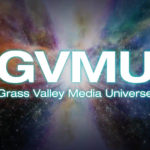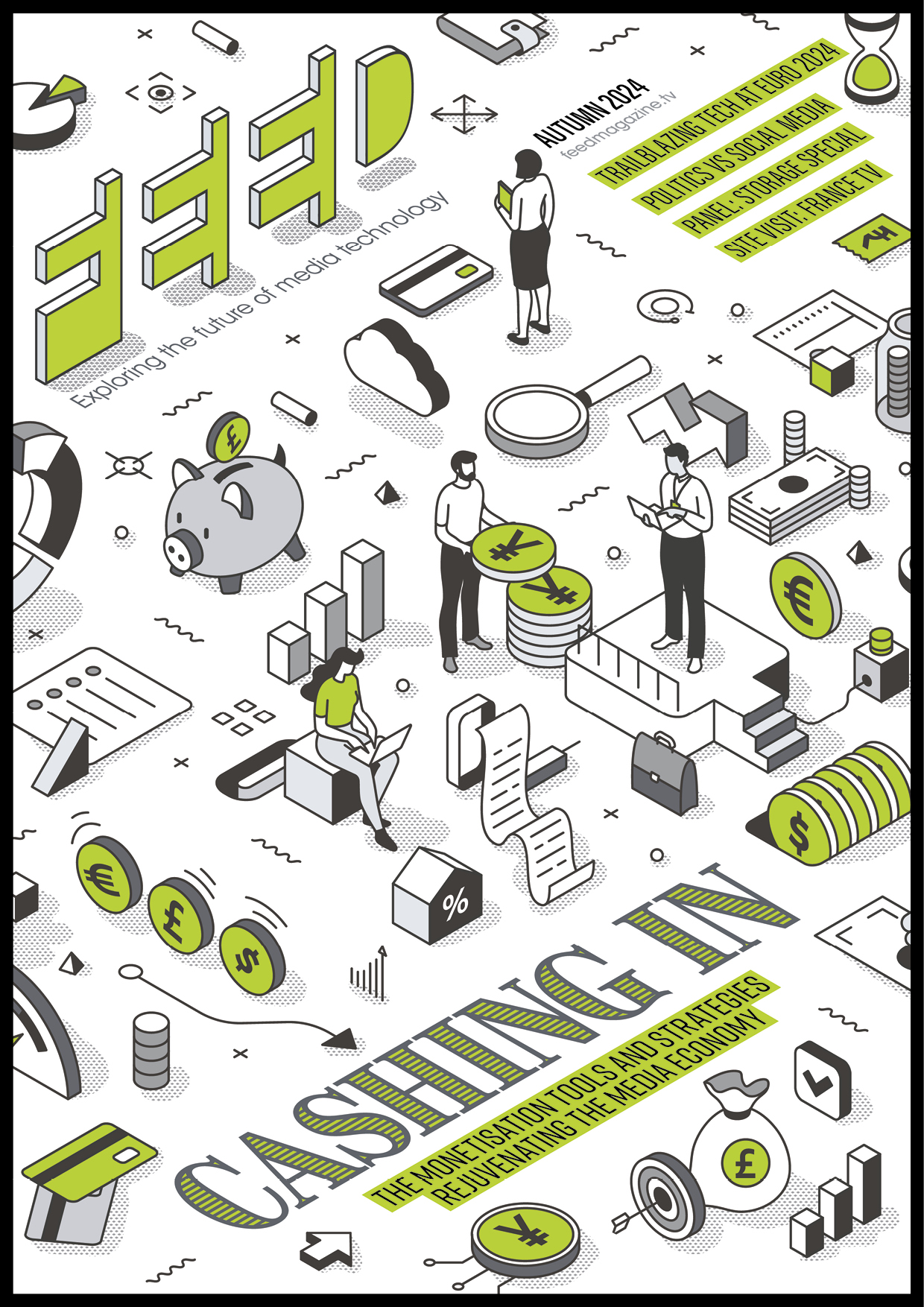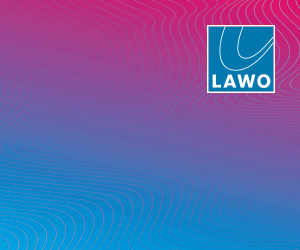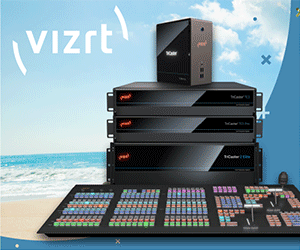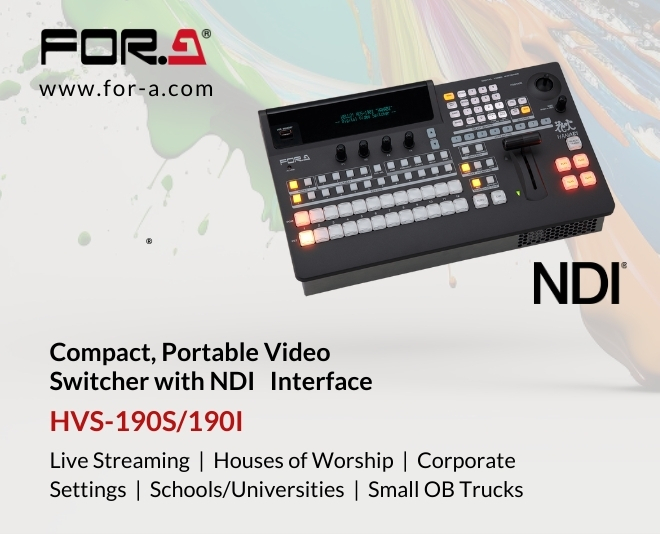Newtek NDI® proves instrumental in keeping Guildhall playing
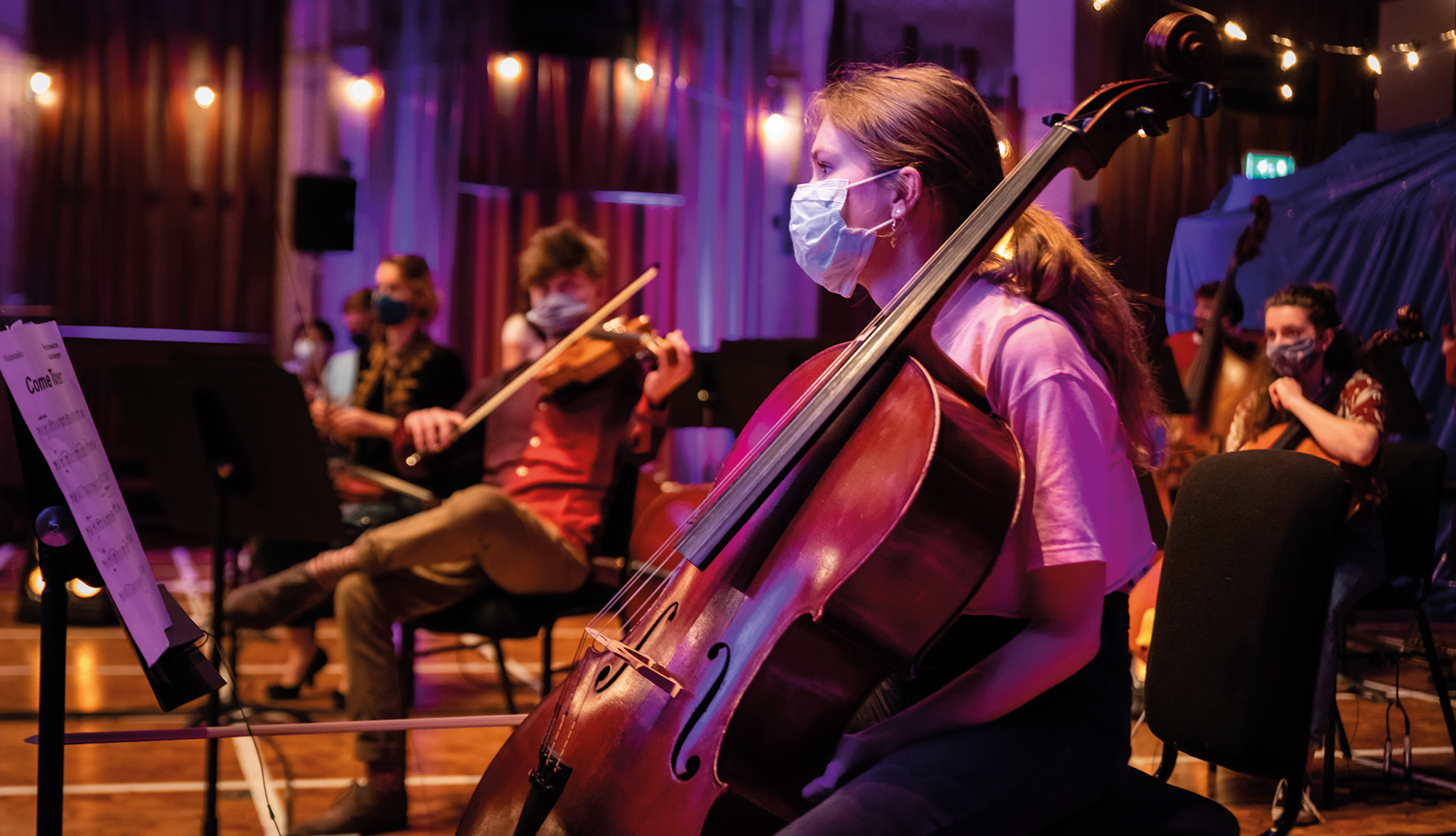
Posted on Jun 25, 2021 by FEED Staff
Sponsored editorial
London’s flagship institution for music and performing arts education met Covid-19 challenges with Newtek NDI ® infrastructure and TriCaster®, connecting students and staff
Accurately networked sound and vision isn’t always the highest priority for an educational institution. But for London conservatoire, Guildhall School of Music & Drama, progress in orchestral music and performing arts has to be analysed on a regular basis. An upgrade to recording infrastructure led to a massive leap in connectivity for a school full of the country’s best-performing artists. The NDI® protocol now delivers extremely low-latency video over IP that dovetails completely with Dante-networked audio, producing a dynamic, safe and extensible educational environment.
A concerted effort
Guildhall School is a vibrant, international community of musicians, actors and production artists. Ranked top UK conservatoire in the Guardian music and drama league tables, it consistently delivers world-class professional training, in partnership with distinguished artists, companies and ensembles. Pre-pandemic, a team of nine, led by head of recording & audio visual, Julian Hepple, was delivering up to 8000 recordings a year, already putting a strain on infrastructure.
“For a small institution with 1200 students, there’s lots of activity at the school,” says Hepple. “In one day, we might have three studio recording sessions, a big-band gig, an opera, a play, four chamber works, plus a lecture or six at the same time!”
“When Covid-19 hit, the School asked if there was anything it could do to the digital infrastructure to support us through this pandemic, as well as improve our teaching and learning facilities for when we opened up again.”
The pandemic meant live performances might have to incorporate streaming, and remote collaboration was more necessary than before.
“We needed to overcome a couple of obstacles,” Hepple says.“First, we had to be able to record lots of performances – simultaneously and really easily. A lot of that would be piloted by one person, but we also required a TV studio to do our flagship productions. Space flexibility was key, and our facilities had to allow large numbers of people to create music or share education simultaneously.”
Social distancing rules dictated three metres between musicians.
“Our concert hall, usually fitting a small symphony orchestra, could only fit 15 players. Suddenly, we couldn’t facilitate largeensemble performances, removing a huge part of training practice for the musicians and actors.”
It also meant the final of the Gold Medal – Guildhall School’s premier music prize, traditionally awarded each May in a sold-out Barbican Hall – would not take place.
Founded in 1915, and surviving two world wars, the competition had never been cancelled.
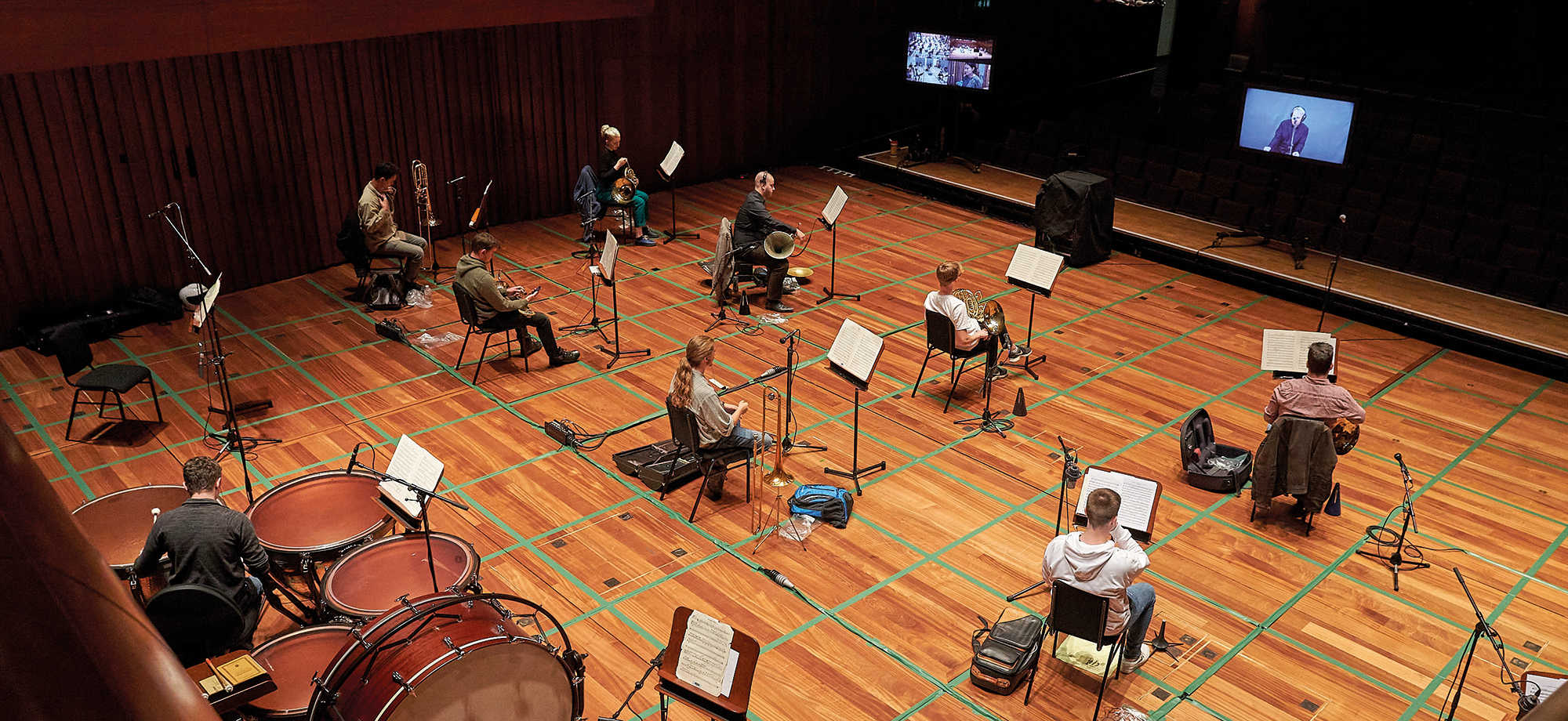
The show must go on
The Guildhall team, including Sam Ziajka, recording and AV network and systems manager, sought a protocol that addressed all the challenges, deciding that an NDI system would be the best fit. Developed by NewTek, now part of the Vizrt Group, NDI enables disparate systems and devices to connect and communicate over IP networks, creating an IP-based production environment with shared access to video, audio and data.
Working with NewTek senior solutions architect, Liam Hayter, as well as technology solutions reseller and workflow design firm, Altered Images, Guildhall devised a project for an entirely new NDI network in May 2020. It covered four buildings in different parts of the campus, working seamlessly with the existing Dante audio network. PTZ cameras were installed in each orchestral room, providing the conductor with a view of the musicians working in a room of their own. A PTZ camera livestreams the conductor’s gestures back to screens in the rooms.
We needed to be able to record lots of performances – simultaneously and easily
According to Altered Images MD Tony Gill, the sheer scale of the project was a challenge, as well as planning and installing the system under Covid-19 restrictions. “With government guidelines changing throughout the project, I didn’t want to overcommit,” he says. “But when we heard that Gold Medal had never been cancelled, we just had to make it work. We had a couple of clever engineers – our CTO and installation projects guy – who worked pretty much exclusively on this project for weeks to get it from a design phase.”
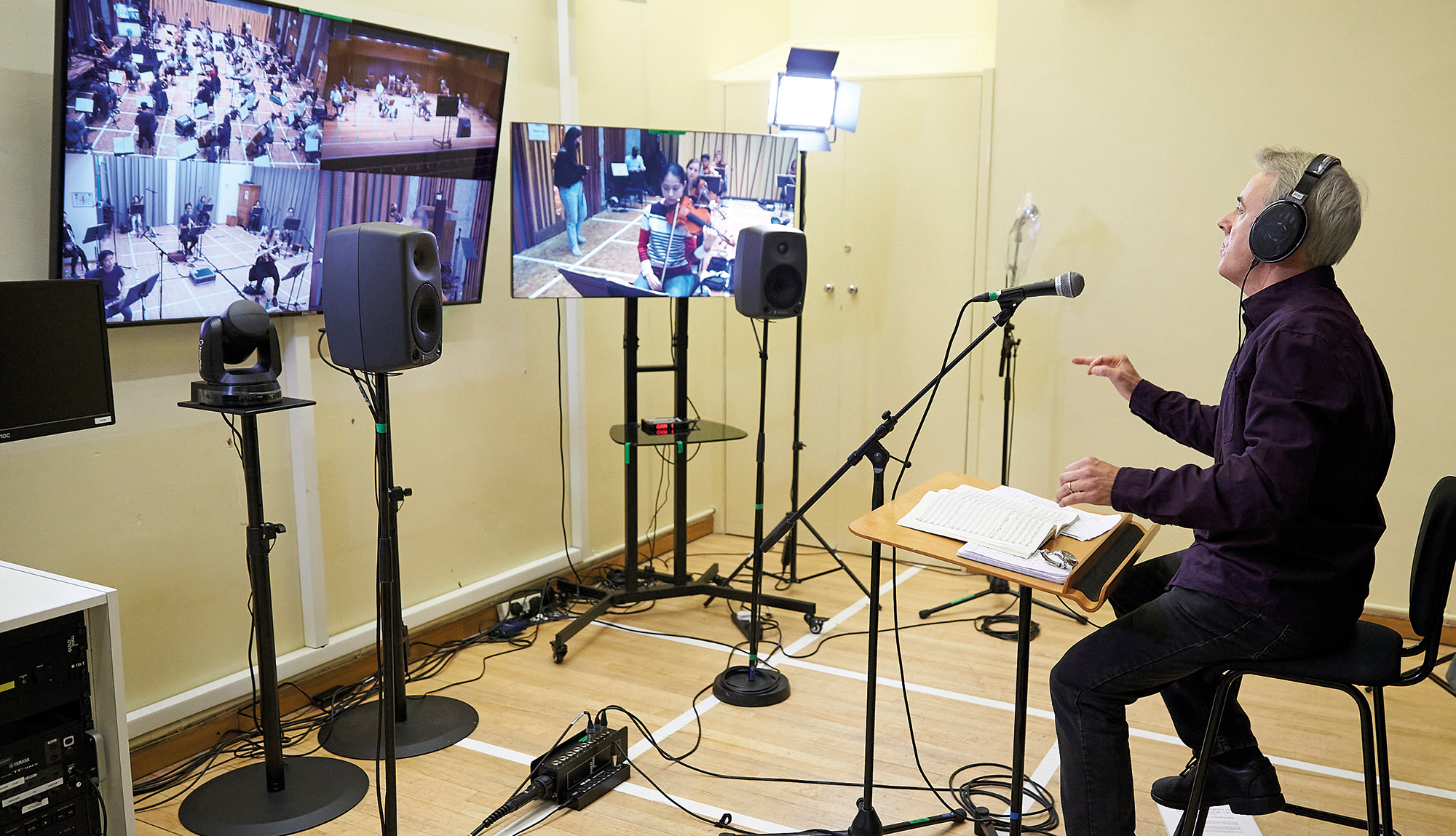
According to Altered Images MD Tony Gill, the sheer scale of the project was a challenge, as well as planning and installing the system under Covid-19 restrictions. “With government guidelines changing throughout the project, I didn’t want to overcommit,” he says. “But when we heard that Gold Medal had never been cancelled, we just had to make it work. We had a couple of clever engineers – our CTO and installation projects guy – who worked pretty much exclusively on this project for weeks to get it from a design phase.”
Time signature
Keeping down network latency was essential, with thorough stress tests off-site and on-campus.
“The conductor is sculpting the orchestra,” explains Hepple.
“The basic technical requirement is that each pair of eyes must see the conductor at the exact same time, so when that downbeat is placed, everyone can respond accordingly. It’s not something you have to worry about in a live setting.
“We installed a bunch of screens in each room. As well as the musicians always seeing a conductor, this means each room also has a quad view of the other rooms, so there’s a sense of visual connection among the musicians.”

Time signature
Keeping down network latency was essential, with thorough stress tests off-site and on-campus.
“The conductor is sculpting the orchestra,” explains Hepple.
“The basic technical requirement is that each pair of eyes must see the conductor at the exact same time, so when that downbeat is placed, everyone can respond accordingly. It’s not something you have to worry about in a live setting.
“We installed a bunch of screens in each room. As well as the musicians always seeing a conductor, this means each room also has a quad view of the other rooms, so there’s a sense of visual connection among the musicians.”
This article first appeared in the Summer 2021 issue of FEED magazine.


